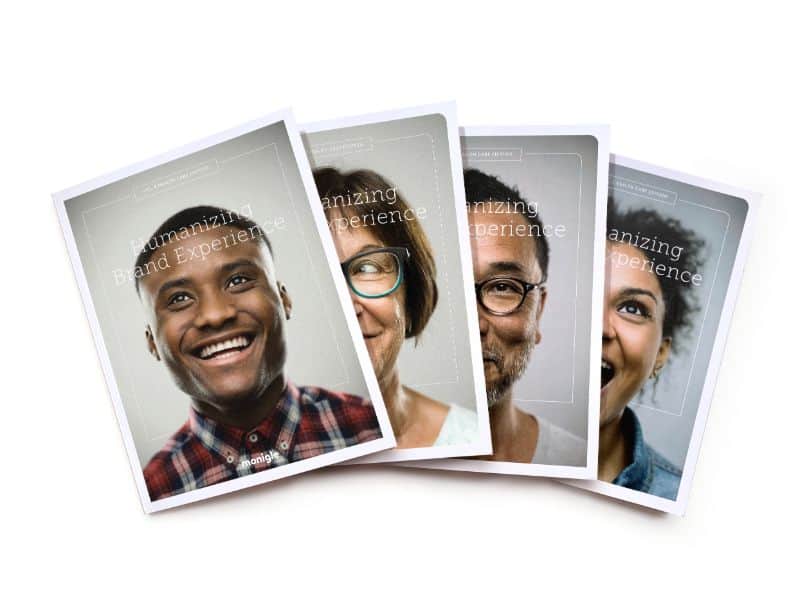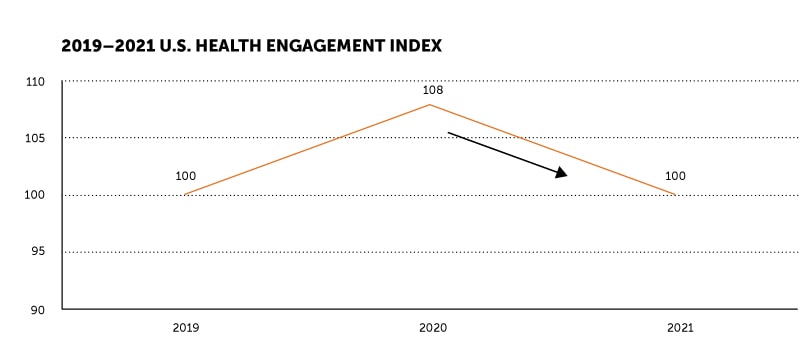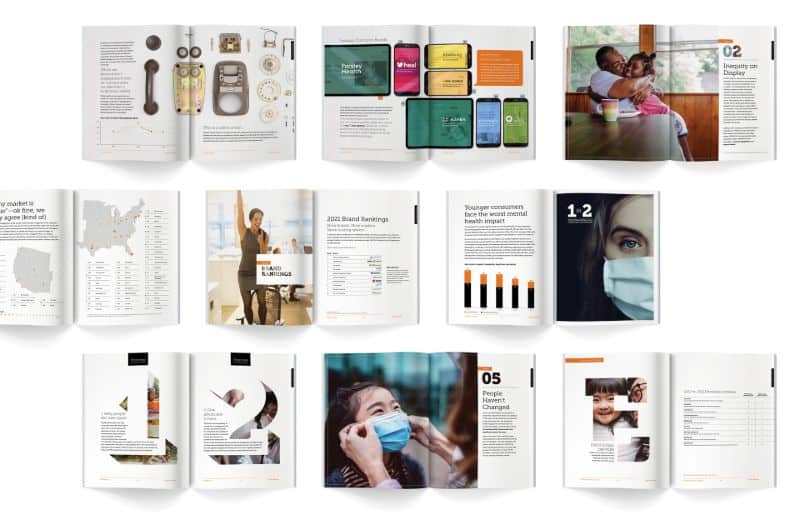Exploring Humanizing Brand Experience Vol 4 Report Findings: The Health Setback

Last month, we released the latest edition of our Humanizing Brand Experience Report. This year’s report is jam packed with the latest findings on consumer preferences, behavior, and engagement with health and wellness. And after such a chaotic, industry-shifting, and health-focused year, it’s one you don’t want to miss.  Today, we’ll explore one of the report’s key insights: the great health setback of 2020 (thanks COVID) and we’ll unpack some of the strategic implication’s healthcare brands need to pay attention to. Let’s dive in.
Today, we’ll explore one of the report’s key insights: the great health setback of 2020 (thanks COVID) and we’ll unpack some of the strategic implication’s healthcare brands need to pay attention to. Let’s dive in.
The Health Setback: Understanding the Data
There’s no way around it: 2020 was a hard year for both overall health and the healthcare industry, and the data shows it.
The chaos of the pandemic beamed a spotlight on some of the experiential weaknesses that have haunted healthcare for years (think inconsistency, misaligned systems and teams, and challenges in accessing health information) and discouraged many from seeking non-COVID-related care. These factors combined to drive a stunning decrease in consumer health and wellness engagement across the country.
 This setback bumped health engagement back to 2019 levels—a disappointing setback after a promising eight-point improvement only a year ago.
This setback bumped health engagement back to 2019 levels—a disappointing setback after a promising eight-point improvement only a year ago.
This dramatic decrease in engagement initially surprised our research team—in a year that seemed consumed by the topic of health, how could consumer engagement levels have dropped? We had to know more, so we dug deeper into the data.
When we deconstructed engagement into its components, we uncovered what was really going on. While issues of health have been front and center throughout the pandemic year, the biggest softening in engagement is around peoples’ Topical Interest in health and wellness content. The constant firehose of unsettling, negative information may have left them feeling fatigued and burnt out on health content—can you blame them? Maybe you’re feeling that way, too.
Strategic Implications
As healthcare brand, communications, experience, and marketing experts, a decrease in Topical Interest in health and wellness content is… not great news. After all, our brand messaging, storytelling, and communications are some of the most significant ways we connect with our audiences.
Fortunately, there are some key strategies for battling topical burnout and overcoming this health engagement setback. Here’s what the data (and our strategists) suggest:
1. Lead with a physician’s voice
Although most engagement factors decreased this year, one key index marker actually increased. Consumers reported that during the past year, their trust in what their healthcare providers had to say increased—and that makes a lot of sense. During the pandemic, the CDC and the voice of the primary care provider were seen as the most trustworthy outlets for information on COVID, safety precautions, the vaccine, and more. With so much misinformation and confusion going on elsewhere, consumers looked to those they see as trusted health experts: the physician.
We can leverage this increase in trust by continuing to use the power of the physician voice to drive brand communications and content. The more we can feature and involve physicians in our brand content experiences, the better. One step further? Leverage your marketing technologies to deliver messages to people directly from their physician. These individuals are the most meaningful sources of trust.
Learn More: Guiding Principles for Creating a Human Brand
2. Empathize with health burnout
As we’ve discussed, consumers are tired of all these stories, headlines, and communications about health, wellness, and healthcare. Since the onset of the pandemic, news channels, social media feeds, branded email content, and even conversations with friends, family, and coworkers have all revolved around health.
This year, we’ll need to be empathetic to our consumers’ content fatigue—particularly as many healthcare brands fight to get people back through their doors for care they delayed. When creating messaging, it will be important to demonstrate a gentle understanding of what they’ve been through before we overwhelm them with a list of all the appointments they should make, or the different health strategies they need to try. A little human empathy goes a long way in creating a connection.

3. Start a conversation
While we won’t know how health engagement continues to play out until next year, it’s a good idea to prepare for a continued softening. Starting a two-way dialogue, and finding ways to increase engagement with people—both as consumers and as patients, is a great place to start fighting back against the setback.
Create built-in opportunities for more conversation and connection. Consider lengthening appointment times—even in the short-term—to accommodate more opportunities for leaning in and listening. If that won’t work for physician’s schedules, can another member of the care team step in for a 15-minute check-in pre-or-post appointment? Meeting people where they are, with empathy, understanding, and a genuine desire to connect on a human level, is the greatest tool we have to reengage consumers over the next year.
While a setback around healthcare engagement is something unexpected, the approach that brands need to take is clear: reclaim the conversation around the information, questions, and challenges on the minds of our people with the confidence that you have so much to talk about both related to COVID but also well beyond it.
Stay tuned for the next piece in our series as we explore another of the report’s key insights: consumer trust. In the meantime, download the Humanizing Brand Experience Vol 4 report. Informed by more than 30,000 consumers, this year’s report highlights how consumer needs have (and haven’t!) changed as they’ve navigated healthcare through the pandemic.



